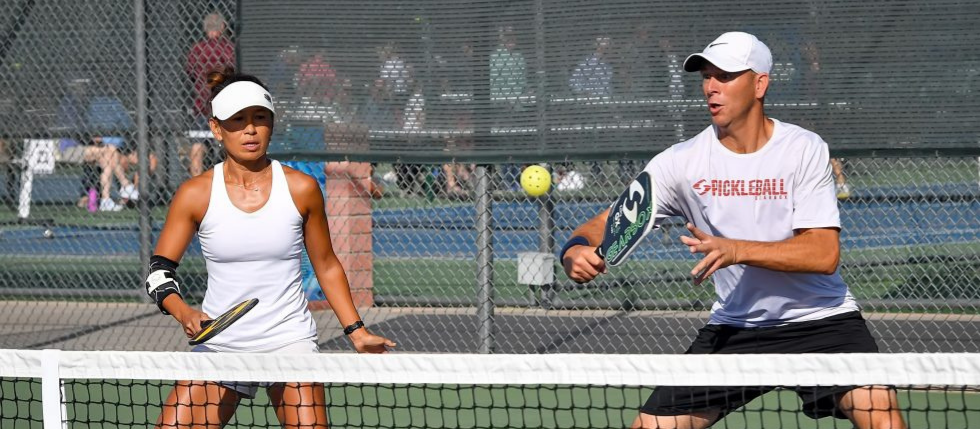One of the first fundamentals a player learns in Pickleball is the serve and return. Once you have learned the basic serve, you learn can multiple different ways to manipulate your skill, which will improve your overall game. Adding in a strategic return will enhance any player’s game but is the key to becoming a more advanced player.
When you first learn to play, the key to learning all skills is to keep simple. Often players look at more advanced play and try to immolate what they see. Though watching advanced play is a good way to set goals, you must first set a foundation.
To serve the ball legally, you must ensure the following:
- The ball is served diagonally and must land in the confines of the opposite crosscourt.
- The motion of the serve must be low to high. When the ball contacts your paddle, it must be moving in an upward motion.
- The head of the paddle, when contacting the ball, must not be above the highest part of the wrist.
- The paddle cannot contact the ball above the player’s waist. For example, you cannot serve the ball by striking from the side above your waist level.
- One foot must remain behind the baseline when serving.
- A “Drop Serve” is legal, which does not require the above rules. I would recommend learning a basic serve first before moving on to any more serving options.
When first starting to play, the serving strategy is simple: get it in the box. Your only job is to ensure that the ball gets to your opponent’s cross court. Remember, this is how your score points! You can worry about adding more challenging components once you have mastered the basics. Players often over think the serve which leads to mistakes. Just like any other skill, practice makes a player more confident. Consider adding serves into your weekly drilling sessions. Start with taking the opponents cross court box and divide it into four targets (A, B, C, D). You can use these targets to practice directing your serve to specific areas. For example, you may want to consider targeting the opponent’s backhand. If you are not able to place the serve where you are aiming, take a look of where your paddle is finishing the shot. Wherever your paddle finishes, is the direction the ball will go.
If you are struggling to control the serve overall, consider reviewing if you are making contact too close to your body. Pickleball is full of skills that require you to over emphasize some movements. Ensure the ball is away from your body when striking.
Once you can serve successfully, which can be defined as getting ten out of ten serves to the opponent legally, you can add more complicated skills to make your serve more strategic. For example, adding top spin to a serve, makes the serve less flat and more of a challenge to return.
The next skill to tackle is the return. The key to a good return is to keep the players back by returning the ball deep. This one concept can change the entire set up of your point. By keeping the opposing team back, you are creating challenges for them to overcome. For example, they now must get to the Non-Volley Zone (NVZ) so they will be on the move. Their feet will be exposed which makes a great target to aim for. The deep return also allows you to successfully get to the NVZ.
Though you can return the ball anywhere to your opponents, choosing areas that are more challenging is obviously more strategic. Advanced players typically target their opponent’s backhand or the middle, but always keep the ball deep.
Serve and return skills are vital to scoring and defending so take the time to really perfect these skills for immediate improvement in your game.
____________
Kimberly McGuire, an astute businesswoman who has thrived during her 22-year tenure in Corporate America. Bachrouche’s five-


Recent Comments